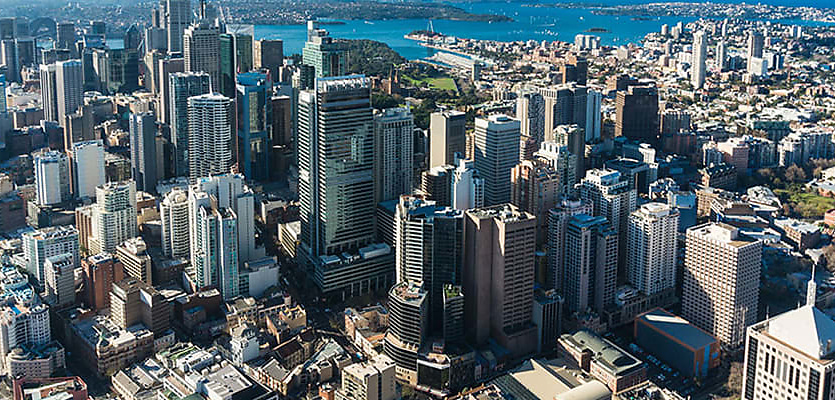A new analysis showed that property values continued to cool in March, as higher mortgage rates and rising affordability woes gave the red-hot market a bitter chill pill.
PropTrack’s recently released Home Price Index – which marked the REA-owned group’s foray into the housing index race – revealed that the national home prices rose month-on-month by 0.34 per cent in March.
Compared to the same period last year, property values are now up by 18.1 per cent. This brought the average price of an Australian home to $684,000.
“Home price growth has slowed considerably in 2022. The increase in prices across the country in March 2022 was at the slowest pace since May 2020, after national pandemic lockdowns,” according to PropTrack economist Paul Ryan.
The expert said that while price growth has slowed dramatically this year, he noted that it is being compared to an “exceptional period”, with Mr Ryan highlighting that 2021 saw the fastest growth in over 30 years.
The slowdown in growth was mainly attributed to the reduced influence of lower interest rates. “Fixed mortgage rates have already increased over recent months and larger rises are expected as the RBA increases the cash rate – widely expected later in the year,” the report stated.
PropTrack said that the outlook for price growth remains subdued, singling out the pace of the official interest rate hikes as the “big unknown” for the property market this year.
Capital markets’ growth further slows down
Adelaide emerged as the strongest performer among capital cities, recording a monthly gain of 0.84 per cent. Prices have increased by 25 per cent over the past year in the South Australian capital, more than twice the rate seen this time last year.
Sydney posted a 0.32 per cent monthly increase – around half of the city’s decade-average monthly pace.
The report noted that the NSW capital’s momentum has been slowing for several months, with annual price growth now at the slowest pace since March 2021 at 16.27 per cent.
The tapering in growth may be partly due to stretched affordability, with the median house in Sydney estimated to now be worth over $1.2 million, according to PropTrack.
Meanwhile, Melbourne’s price growth stalled during the period, eking out a 0.1 per cent monthly increase. Over the year, prices in the Victorian capital rose by 10 per cent, the slowest rate since the start of the pandemic. Currently, the city’s median house value sits at almost $900,000.
Brisbane was the biggest mover on an annual basis, with prices rising 27.02 per cent over the year. However, price growth continued to slow in the Sunshine State capital, with March posting the slowest monthly result since May 2020 at 0.49 per cent.
Moving on to smaller capital cities, Perth property values fell 0.11 per cent month-on-month, dragged by the weak performance of the unit sector in the city.
The Western Australian capital’s annual growth was also the slowest among capital markets, rising by just 8 per cent over the past year.
Canberra’s market continued to be red-hot in March, posting a 0.35 per cent monthly increase. Compared to March 2021, prices are up by 26.4 per cent, making it one of the strongest-performing capital city housing markets over the past year.
Price growth was slower in Hobart in March, with prices rising at the slowest rate since the national pandemic lockdown in early 2020. Despite this, prices continue to grow strongly relative to the rest of the country, up 24 per cent over the year.
In Darwin, house prices fell 0.61 per cent over the month – the biggest decline among capital markets. House prices rose 9.47 per cent over the year, bringing the median house price to $479,000. Overall, Darwin remains the most affordable market for house buyers.
PropTrack noted that while Darwin’s growth reached very high levels in late 2021, the city’s pace has since slowed considerably, particularly for houses. Looking forward, PropTrack predicted weak market conditions to persist in the Northern Territory capital.
Regional markets continue to shine in 2022
Regional areas remained robust in March, as their relative affordability and preference changes towards lifestyle locations continued to drive growth.
Regional markets in all states outperformed their capital city region counterparts, with regional South Australia (1.03 per cent), regional Queensland (0.68 per cent), and regional NSW (0.76 per cent) revealed as the strongest performers.
Other regional areas to see positive growth during the month were regional Victoria and regional Tasmania, recording gains of 0.33 per cent and 0.30 per cent, respectively. A more subdued growth was seen in regional Western Australia, with prices edging up by 0.10 per cent in March.
The only regional market to see a decline was regional Northern Territory, falling by 0.1 per cent month-on-month.







You are not authorised to post comments.
Comments will undergo moderation before they get published.